- TOP
- Search Criteria
- Go Before It's Gone: A Visit to Tsukiji Market

STORY
Go Before It's Gone: A Visit to Tsukiji Market
- TOKYO
- TSUKIJI
- DINING
- SHOPPING
- SPECIAL
- TSUKIJI_MARKET
- SEAFOOD
- SUSHI/
- TABE_ARUKI
- SUSHI
- SASHIMI
- FOOD_CULTURE
- MARKET
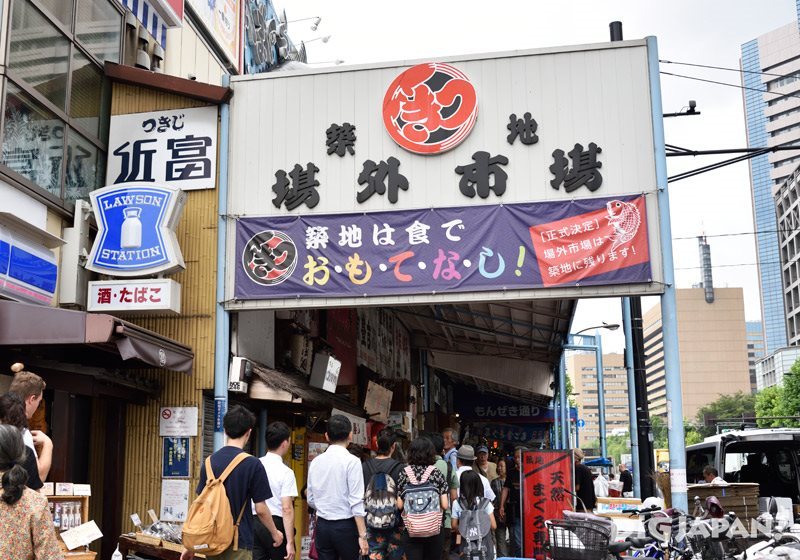
The outer market is made up of some 400 different shops. You can find stores selling various miscellaneous goods, spices, and more. Of course there are also restaurants and stores selling food for take-out. Here are a few of them.
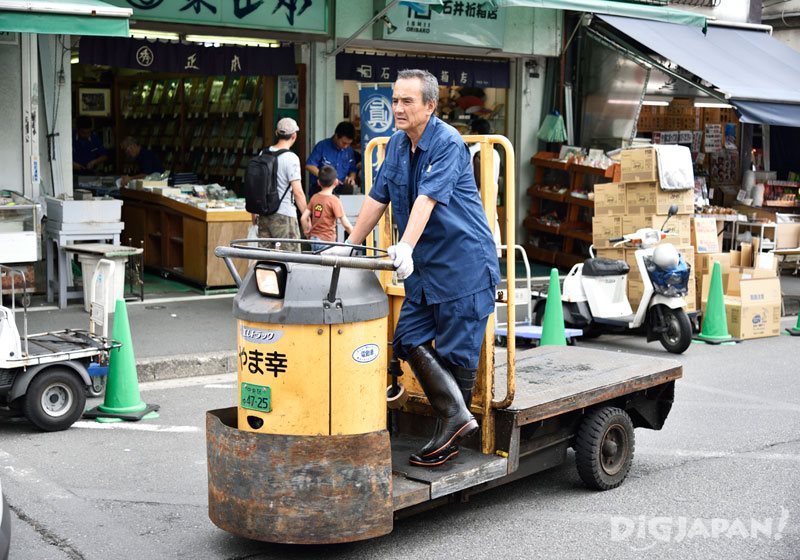

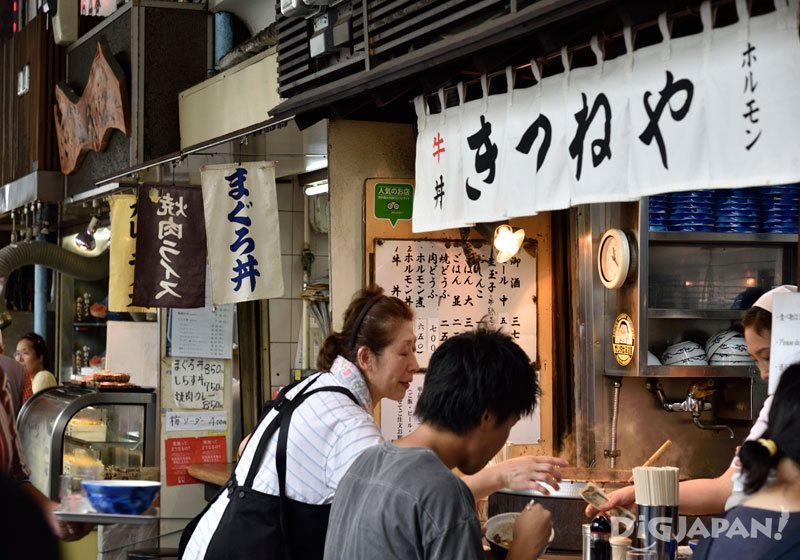
Go on a tasting tour of Tsukiji
If asked what's the best way to enjoy time spent at Tsukiji Market, a local would probably reply tabe-aruki, or eating as you walk. There are many stores that sell food in small portions so visitors can try a little of a lot of the market's delicious fare.Kushi Tama at Tsukiji Yamacho
This may surprise some of you, but one of the most popular street food for tabe-aruki at Tsukiji is not a kind of fish. It's tamago yaki, Japanese-style omelet! Puzzled as to why there would be stores selling tamago yaki at what is ostensibly a fish market? For many years, these shops have been supplying sushi shops and restaurants with the tamago yaki necessary to prepare their meals. Recently, veteran tamago yaki shop Tsukiji Yamacho has generated quite a buzz with their tamago yaki on a stick. The stick makes it easier to enjoy the tamago yaki while walking.
Tsukiji Yamacho offers a variety of tamago yaki including sweet and not-too-sweet options as well as warm and chilled ones. Our suggestion for anyone with a sweet tooth is a warm, sweet tamago yaki.

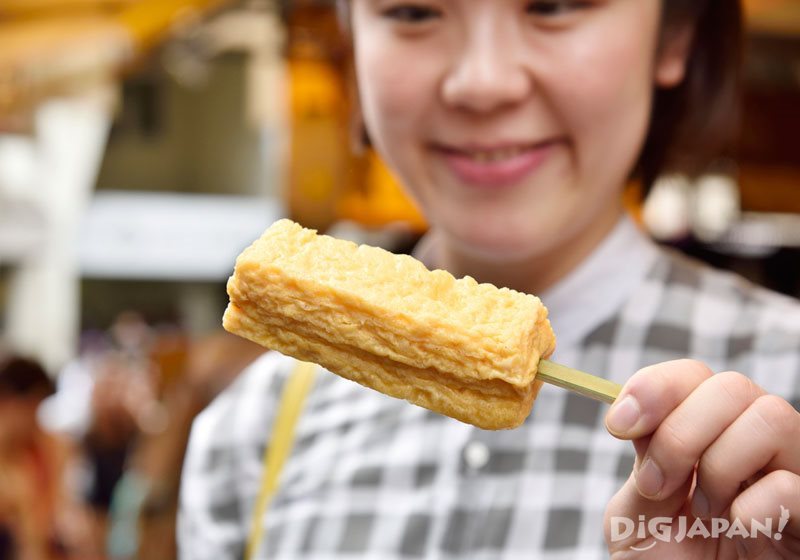
Kaisen-don at Maguro No Miyako
But when you visit Tsukiji, you're definitely going to want to save plenty of room for some of the most delicious seafood you've ever tried. That's why there are plenty of seafood options for your tabe-aruki adventures. The shop Maguro No Miyako, for example, serves a popular treat of scallops grilled together with the catch of the day served on top of a scallop shell. The aroma of the freshly grilled seafood is mouth-watering. Also, watching the cooks grill up these tasty treats is quite the performance!

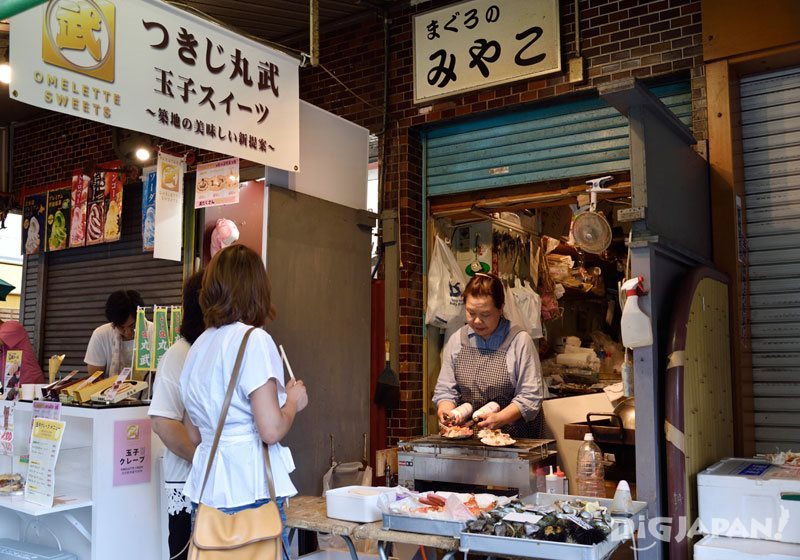
While the name Tsukiji is virtually synonymous with seafood, the meat here is also highly recommended! For example, Yoshizawa Shoten's famous dish is their menchi katsu-- a ground meat patty that's been battered and deep fried-- made with Matsuzaka beef. From first bite to last, it's incredibly juicy and bursting with robust flavor. To give you an idea of just how good Matsuzaka beef is, consider that some of Ginza's most luxurious restaurants specializing in Japanese beef also choose the same brand. Lucky for you, you can enjoy all that first-rate deliciousness for just 350 yen for the menchi katsu. Don't miss it!

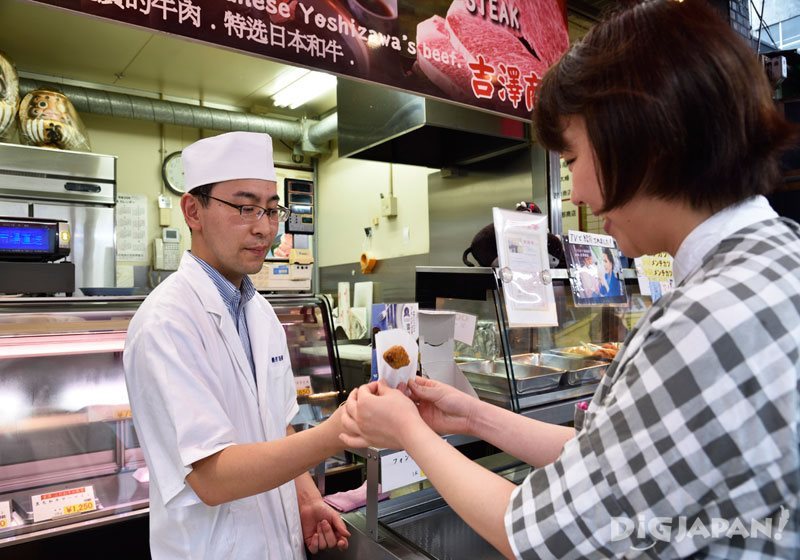
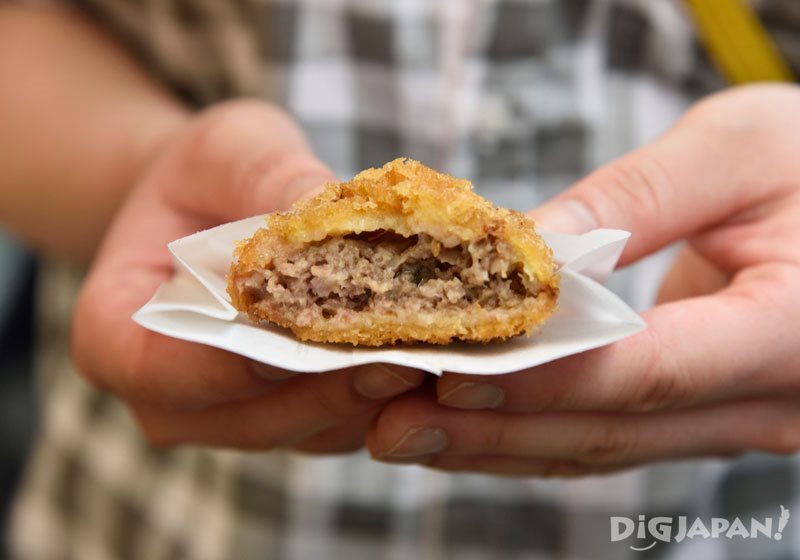
Whether at a counter seat or a standing restaurant, enjoy a meal "Tsukiji-style"
The outer market of Tsukiji is packed with tons of places where you can grab a bite at the shop's counter or at a yatai, a kind of food stand that feels reminiscent of yatai markets in some other Asian countries. Along Shinbashi-dori, the main road here, you can find places selling seafood donburi (rice bowls), soba, ramen, and much more. It's not uncommon to see people lining up outside of the very popular places!Maguro-donburi at Maguro-donburi Segawa
Out of the many restaurants specializing in kaisen-don, or seafood rice bowls, there's one in particular that stands out among the others: Maguro Donburi Segawa. Specializing in tuna, this store takes their namesake fish very seriously. In fact, there's only one item on the menu. You guessed it--- maguro donburi! They marinate that day's fresh red meat tuna in their special soy-based sauce and layer it on top of vinegared sushi rice. This fish practically melts in your mouth when you eat it.
(While technically there's only one item on the menu, when delicious chuu-toro tuna comes in, the shop makes special Ima Dake Donburi ("get it while you can" rice bowls) which sell for 1,600 yen.)


Stuffed? Take a break from eating to do some shopping!
Tsukiji HitachiyaThe outer market of Tsukiji is also home to shops selling seasonings and other foodstuffs, kitchenware, and so on. Here you can find stores selling the ingredients you need to make dashi, the soup stock essential to producing the signature umami flavor of Japanese cuisine, and those selling Japanese knives. Out of all the stores selling kitchenware, there's one in particular that stands out as the most popular: Tsukiji Hitachiya. Carrying some 1,000 different items from tea cups to fun but useful interior goods, this store catches the attention of both Japanese and foreign tourists alike. Whether you're looking for some Japanese cooking utensils or unique interior decor, this is the place to go!


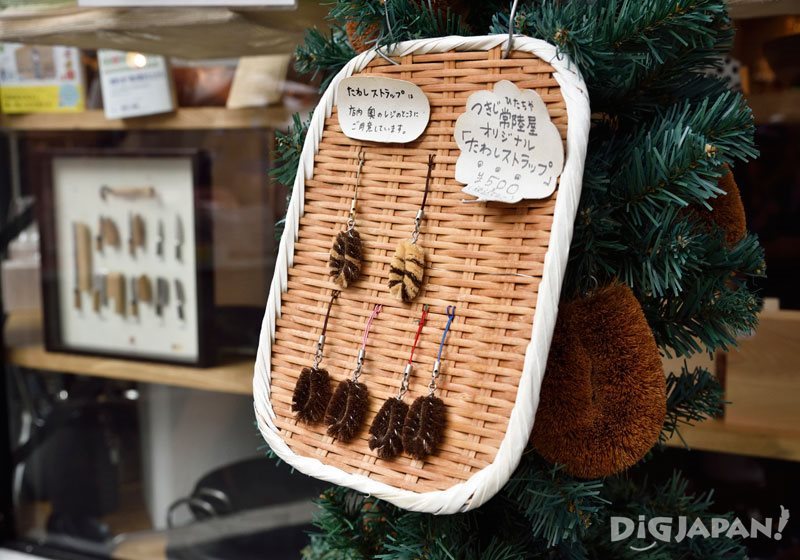
Enjoy a coffee (or matcha!) break at Tsukiji
A matcha set from Tsukiji Maruyama Jugetsudo's main Tsukiji locationAfter enjoying all the tastes of Tsukiji as well as some shopping, why not enjoy a little break with some coffee or tea?
One option for this is Tsukiji Maruyama Jugetsudo. It might surprise you to learn that this store actually specializes in nori seaweed--- and that this long standing-store has also opened up a branch in Paris. But Jugetsudo also carries matcha, the refreshingly bitter aroma of which fills the store. We recommend ordering their matcha set. It comes with a soft, seasonal Japanese sweet, and the staff will prepare the cup of tea right in front of you using traditional methods. The matcha they use here has a faintly sweet taste which goes along great with the wagashi.
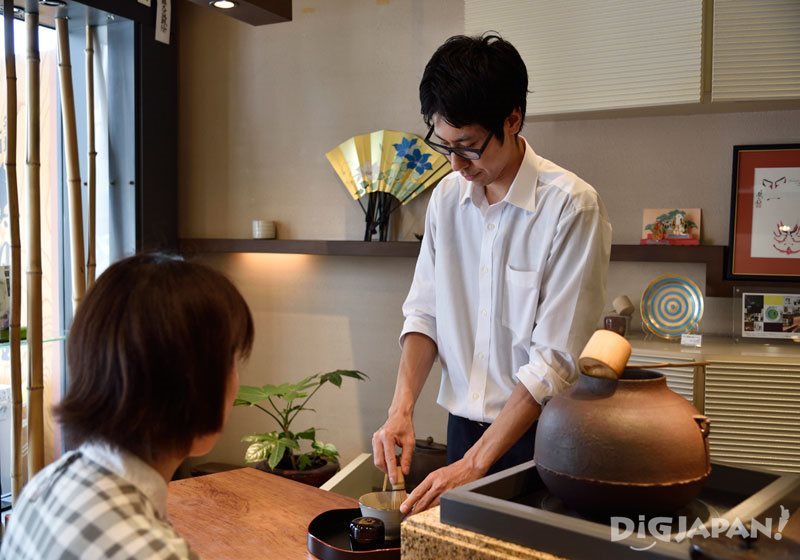

Coffee from Yonemoto Coffee's main location
From the early morning, Tsukiji's first coffee shop Yonemoto Coffee is lively with both market employees and shoppers. Here, visitors can enjoy high-quality coffee made from freshly roasted beans at prices on par with chain coffee shops. The bracing aroma of coffee combined with the amicable presence of the shop owner is the perfect pick me up after a long early walk through the market. The slightly narrow main shop has seating for only twenty, but the newer shop Tsukiji Shinten is located nearby. Head there if you want to stop by during busy hours.
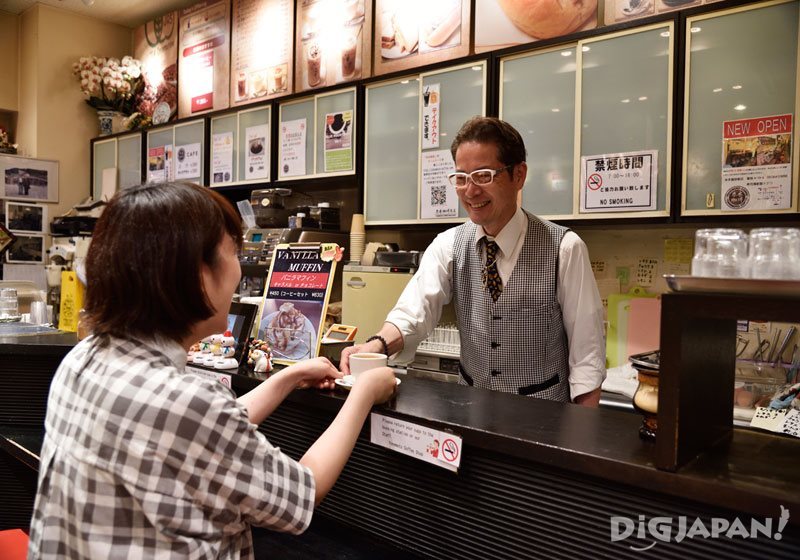

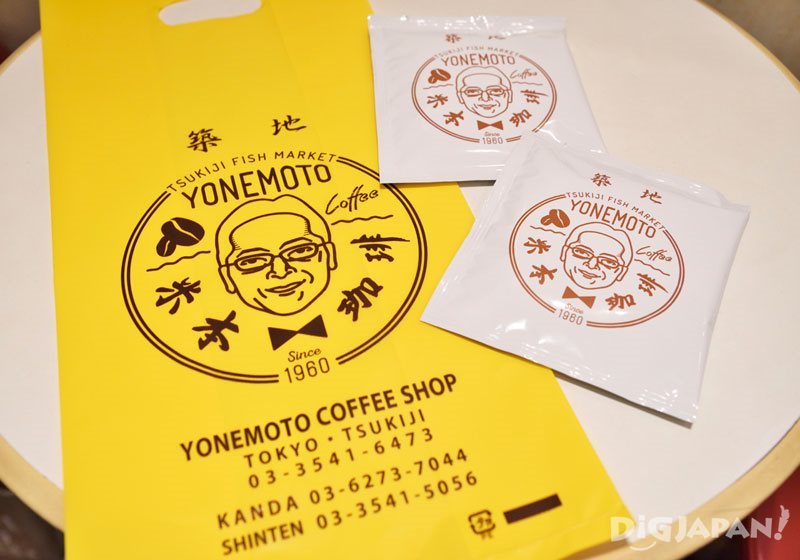
There's even a tourist information center!
Also located in Tsukiji's outer market is Platto Tsukiji, a tourism information center. Not only do they provide English language maps, but they also have information about other attractions in the local area as well as information about public transportation. They sell souvenirs like a T-shirt with a maguro design and ice packs for shoppers wanting to keep their market purchases fresh. There is also a selection of various size coin lockers here for storing your stuff as well as a free rest area with vending machines. Should you have any questions about Tsukiji, this is the place to go!
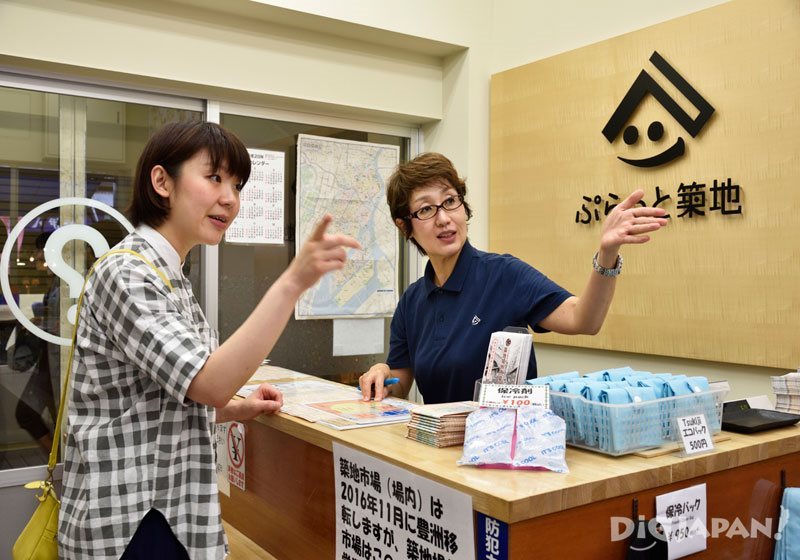
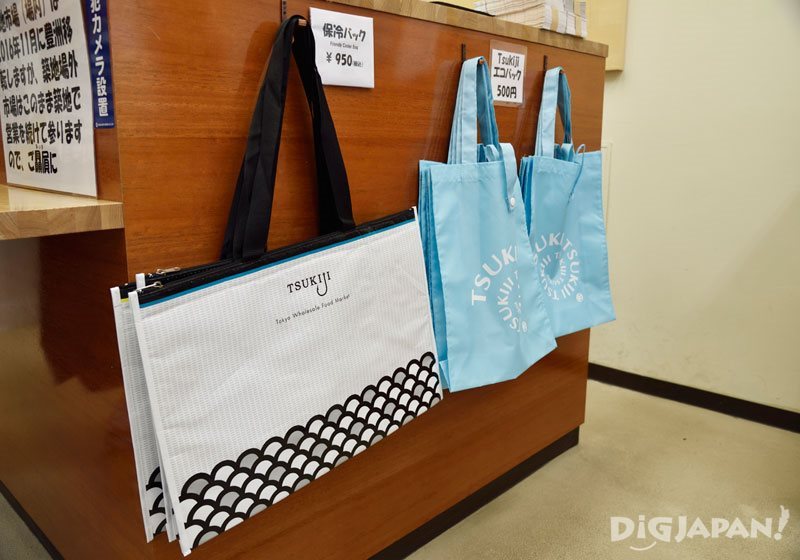
Basic Information about Tsukiji Outer Market
1. Most stores in the market open early in the morning and close around noon.Most of the stores in the market cater to the needs of professionals, so many open early in the morning and close at or around noon, so please keep that in mind when you visit.
2. Be careful of market closings!
There are several things to be aware of when it comes to stores and their days off. In general, many stores will be closed when the market is closed, which is on Sundays, national holidays, and some Wednesdays. Please plan your visit accordingly!
3. Accessibility
The nearest stations to the market are Tsukijishijo Staton (Toei Oedo Line) and Tsukiji Station (Tokyo Metro Hibiya Subway Line). The market is roughly a 2~3 minute walk from either station. Also, you can walk from the market to Ginza in about 20 minutes.
Do you have a favorite place to go when you visit Tsukiji Market? Or maybe there's a certain type of food you'd like to recommend? Let us know in the comments, and enjoy your visit to Tsukiji Outer Market!
Information
Tsukiji Yamacho | 築地山長
Address: 4-10-10 Tsukiji, Chuo-ku, Tokyo
Hours: Mon~Sat 6:00am~3:30pm; Sundays and holidays 8:00am~3:30pm
Maguro Miyako | まぐろのみやこ
Address: 4-13-13 Tsukiji, Chuo-ku, Tokyo
Hours: 5:00am~ around 5:00pm
Note: store may close early
Yoshizawa Shoten Tsukiji Location | 吉澤商店 築地店
Address: 4-13-15 Tsukiji, Chuo-ku, Tokyo
Hours: 7:00am~2:00pm
Closed Sundays, holidays, and days when the market is closed
Maguro Donburi Segawa | まぐろどんぶり 瀬川
4-9-12 Tsukiji, Chuo-ku, Tokyo
Hours: 8:00am~12:30pm (store will close once supplies are sold out)
Closed Wednesdays, Sundays, national holidays, and days when the market is closed
Tsukiji Hitaya | つきじ常陸屋
Address: Cygnet Deux 1F
4-12-5 Tsukiji, Chuo-ku, Tokyo
Hours: 8:00am~3:00pm
Sundays and national holidays 10:00am~2:00pm
Tsukiji Maruyama Jugetsudo Main Store | 築地丸山 寿月堂 築地本店
Address: Tsukiji Kyoeikai Bldg. 1F
4-7-5 Tsukiji, Chuo-ku, Tokyo
Hours: 9:00am~6:00pm
Closed Sundays and national holidays
Website: http://www.maruyamanori.com/en/history/index.html
Yonemoto Coffee Main Store | 米本珈琲本店
Address: 4-11-1 Tsukiji, Chuo-ku, Tokyo
Hours: 5:30am~4:00pm
Closed Sundays and national holidays
Puratto Tsukiji | ぷらっと築地
Address: Senjakakuto 1F
4-16-2 Tsukiji, Chuo-ku, Tokyo
Hours: 8:00am~2:00pm
Sundays, holidays, and days when the market is closed: 10:00am~2:00pm

Liked this story? Like DiGJAPAN!
on Facebook for daily updates!
THIS ARTICLE IS BASED ON INFORMATION FROM 12 27,2016 Author:DiGJAPAN! Editorial Team













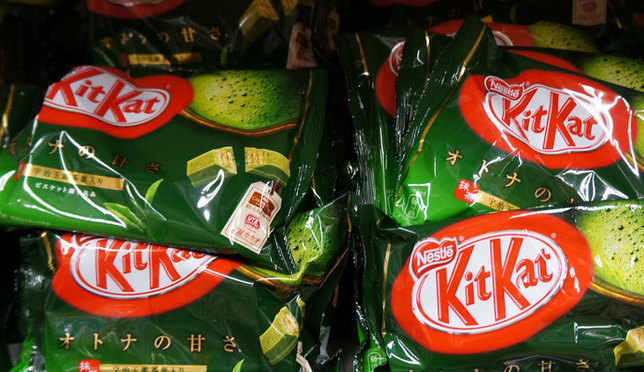

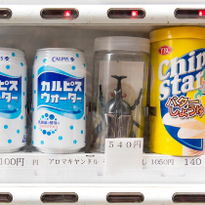

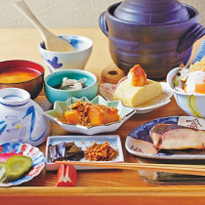




NEW COMMENT | 0 COMMENTS
Open a DiGJAPAN!
account to comment.
Open a DiGJAPAN! Account